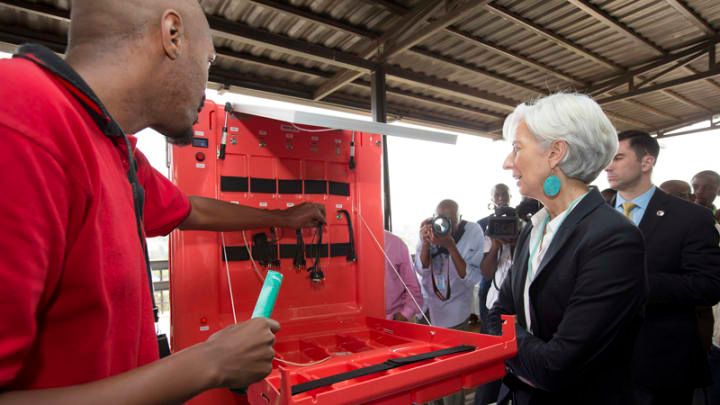Peer Learning is...
Towards self-direction
A lot more becomes possible when learners are motivated and self-directed, but how do we help them get there? It's a combination of initiating their agency, inspiring them to take a bit of control, then bit by bit, starting to respond to their control.
Initiating Agency
The trick to building agency in learners is to focus on activities that inspire, and develop mindset. Building confidence in a safe environment is a start. From there, helping someone see their options gives them meaningful sense of choice. Finally, immersing learners in a community that share their desired mindset supports a sense of identity and becomes a source of inspiration.
Raise Confidence
Michel Thomas, one of the world's biggest language instructors, starts his French lessons by sharing an easy tip: most English words ending in -ion are also French words. Information, revolution, solution. Same word, French accent. How do you say fluctuation? Instruction? Circulation? You've now started with a several-hundred word vocabulary. After 10 minutes learning a few other simple words, like "I have" is "J'ai", students can start making up their own sentences and talking to each other. It's a fun confidence-builder that shows each student they can do this.
Experiential games and exercise that are designed for learners to succeed beyond their early expectations give them a sense of what it's like to own the skill. Group work increases the number of people who get this early boost, because as Eric Mazur learned at Harvard Physics, the strongest in the group understands the weakest, and can quickly explain what they're missing.

Knowing you're not alone is a big enabler. And thinking you're not good enough is a big disabler. Both can be addressed with an environment where people feel they can be vulnerable. That way, people share openly about their reservations and start to offer support. Otherwise, people only see unrealistic success stories that omit the missteps and mistakes, and feel inadequate in comparison.
Kelly Thompson is a best-selling author and one of Kickstarter's Top 10 funded novels. She explains why so many bestselling authors, like Chuck Pahlahniuk and Irvine Welsh, are zealous about their writers' groups:
Writing and “being a writer” is a frequently painful and protracted journey filled with epic highs and abysmal lows. And if you’re lucky enough to find the right writing group, as I did, the best thing about being in that group will be having friends that "get it."
Confidentiality and privacy are usually a prerequisite for safety. It was essential to begin Alcoholics Anonymous:
Because its founders and first members were recovering alcoholics themselves, they knew from their own experience how ashamed most alcoholics are about their drinking, how fearful they are of public exposure. A firm assurance of confidentiality was imperative if they were to succeed in attracting and helping other alcoholics to achieve sobriety.
Over the years, anonymity has proved one of the greatest gifts that A.A. offers the suffering alcoholic. Most newcomers still find admission of their alcoholism so painful that it is possible only in a protected environment.
New groups feel public, so people consider social acceptance and stigmas before speaking out. Flushing out everyone's hopes and fears, rather than success or failure, is a big stimulus for group cohesion. It focuses everyone on their commonalities, and puts differences in progress in a broader perspective. It makes it okay to raise their voice and ask for help. A simple introduction format is to ask people introduce themselves without their titles or achievements, but instead with their latest inspirations and latest struggles.
Hearing how other people like you are doing, both successes and challenges, helps people feel capable. It triggers the learner into action by example of their peers: "If they can do it, then so can I!".
Inviting people to share their personal journeys helps to create a feeling on kinship with a group. An exercise we developed to do this is to put people in pairs, and ask each person explain why they started and stopped each major project or job in their life. Then the listener chooses 3 images from a stack of cards that they feel symbolise the story-teller, and explains why they chose them. Exercises like this Symbol Game reveal personal histories, different world-views, and get everyone to reflect on what behaviours they share.
Different cultures open up to groups differently. Some are open to share troubles and criticisms to big room of strangers. Others have stronger deference to hierarchy, or are more collectivist, so are more reserved at first. Would it help people to open up if they interacted in smaller groups, or over a longer period of time?
Offering Options
Provide learners with a variety of approaches to tackle a problem. Such insights excite learners to try new things, because they had no idea it could be done in another way!
Sometimes, they're almost trivial, like when a rapper hears a great beat and writes a track around it. Can you create a similar space, where learners share little bits they like or find interesting?
Sometimes, it's about process, like seeing how another graphic designer makes an image pop out. Layer Tennis is a fun meetup format, where two graphic designers "compete" by working on the same image, passing back and forth every 15 minutes. The audience mingles with drinks, keeping an eye on the designers' screens on huge projectors, and picking up all kinds of tips and inspiration.
And sometimes, it's hearing about a life story or career path that makes you realise you can do the same. We once built the largest online entrepreneurship course for Africa. It was simply a set of interviews of African founders describing the unique challenges they faced, and the different ways they overcame them. No prescribed answers, just exposing different approaches to such problems.
Conferences often serve this purpose. They show a range of options and give learners a feeling that they've grasped the zeitgeist. They have a sufficient range of options to choose from.
Immersion
Mindset shifts arise from a sense of belonging to a group that is going in an inspiring direction.
Kelly Thompson is a best-selling author and one of Kickstarter's Top 10 funded novels. She explains why so many bestselling authors, like Chuck Pahlahniuk and Irvine Welsh, rely on their writers' groups:
Writing and “being a writer” is a frequently painful and protracted journey filled with epic highs and abysmal lows. And if you’re lucky enough to find the right writing group, as I did, the best thing about being in that group will be having friends that "get it."
Once learners have a safe space and feel empowered, the primary tools of the educator shift from 'content' and 'instruction' towards helping learners find and create their peer groups.

Creating an immersive culture
Inviting guest speakers from abroad is typical way to introduce new modes of thinking. For people to adopt their mindsets, conversational formats are more effective than lectures because the exchange of ideas and context stirs critical thinking and puts the foreign knowledge into a local context.
Fishbowl discussions put a few empty chairs on stage for the audience to join into a fireside chat. Anyone from the audience can speak, but they have to sit on stage to do so, and one chair must remain empty, so there's a calm rotation of people joining the conversation.
Flocks is a Source format that connects people based on what they're trying to accomplish. A large conference room or lobby is surrounded by big posters with a simple fill-in-the-blanks message: I'm just a ____\ trying to _______ in a _______._ People start to fill in the posters, which then act as a flag to attract others to meet them.
Adapting to learners' needs
Modularity enables a program to deploy content more easily to specific learners with specific goals. Split your lectures and workshops into short 20-30 minute sections, each with a clear learning goal and outcome. That way, you can pick and choose from them based on learners' requests.

Surveys
Running surveys about learning goals, progress, and challenges helps plan and adjust which topics to cover, skip or emphasise. Self-assessment questions, like how proficient are you with X can sometimes spot areas where learners are frustrated. Open-ended questions, like what would you like to learn about X and why require more work to analyse, because they reveal clearer, more effective changes to the program. When self-diagnosis is inaccurate, objective questions will reveal their stage with little inference: What stage are you at? How many lines of code are in your app? How many gigs have you played this year?
Feedback forms
Running feedback forms after a learning program helps gauge whether the content is contributing, as well as spot oversights. Open-ended questions require slightly more work to analyse, but the insights gained from them save a lot of wasted effort and pay big returns in immediate improvements. What did you want to learn, and did you learn it?, What was most actionable?, What can we do to improve?
Post-Ups
Post-ups are a way to start workshops with learner's sharing what they want to learn. They're invited to write down one or two big questions on a sticky note, which they then group with other questions on a wall.
The instructor then can see what groups of requests and questions are the most popular, and adjust accordingly. Post-ups also reveal what's on the learners' minds and expose their mental stumbling blocks up-front
Casual check-ins
The purpose of calibration is to adjust the program content to topics that learners need. Checking in regularly makes both educator and learners aware when they're stuck or spinning their wheels, and intervention is useful. This could be done over regular coffees, drinks or dinners after class, or any other social setting. It may seem like a trivial exercise, but it will easily flush up the biggest oversights in matching learning challenges with solutions.
